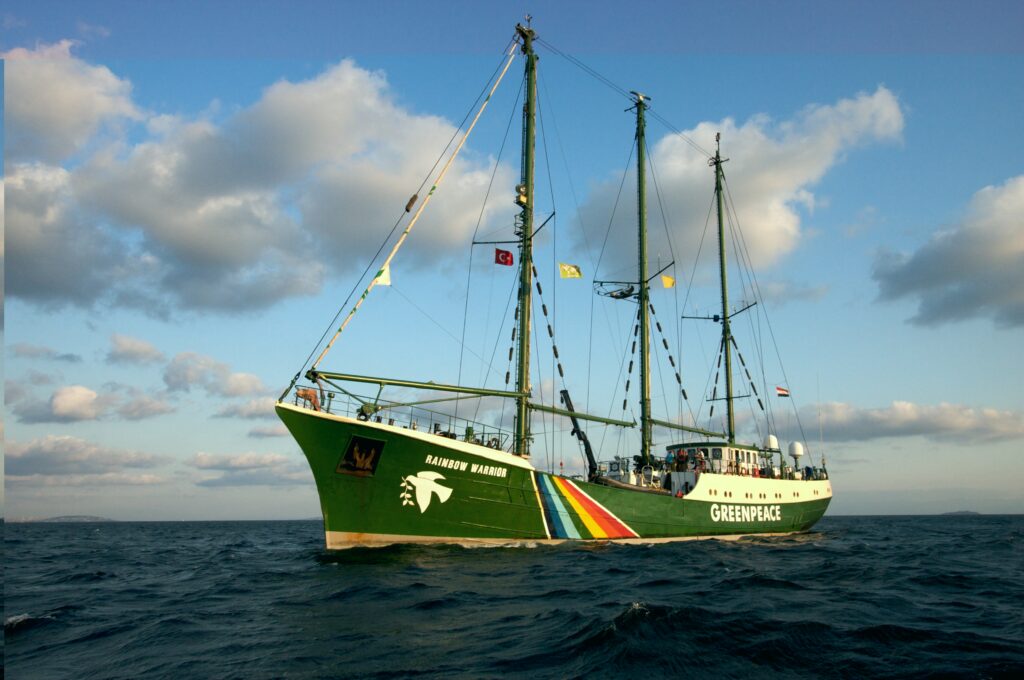On July 10, 1985, two bombs placed on the hull of the Greenpeace flagship Rainbow Warrior exploded, sinking the ship and killing two crew members.
The Rainbow Warrior was Greenpeace’s primary oceanic protest boat. It was in harbor at Auckland, New Zealand, preparing for a voyage to interfere with planned nuclear tests by the French government at a nearby atoll. Two spies from the French secret service placed the bombs, one near the propeller and another against the engine room wall.

Just before midnight, crew members reported: “Suddenly, the lights go out. There’s the sharp crack of breaking glass. Then, a sudden roar of water.” They thought that they’d been hit by another boat. Then came a second explosion. Within minutes, the boat listed, water filling the hull.
The French government at first denied their involvement, but soon admitted that their secret agents had placed the bombs. Reaction in New Zealand was intense and drove bad relationships between the two countries for years. Eventually the United Nations was enlisted for arbitration that led to a French apology and compensation to New Zealand. The secret agents were arrested and tried—and imprisoned for a mockingly brief two years each.

The original Rainbow Warrior began its work for Greenpeace in 1978. Before then, it had been a fishery research vessel for the UK Government. Its first voyage for Greenpeace was to Iceland to protest commercial whaling. Later it moved to the Pacific Ocean to campaign against nuclear testing. The ship was named after a Native American saying that in a mistreated world “… people will rise up like Warriors of the Rainbow….” And, indeed, the Rainbow Warrior rose again. A second ship, Rainbow Warrior II, entered Greenpeace service in 1989, leading campaigns against nuclear testing, whaling, inhumane fishing, climate change and other environmental issues. It was retired after 22 years, in 2011.
That fall, a new Rainbow Warrior III entered service for Greenpeace. The new ship was built purposefully as a protest campaign vessel. It is nearly 200 feet long and can carry up to 30 crew members. Storage space is available for 8 tons of scientific equipment for research work. It is as fast as the commercial vessels it confronts; can launch small boats in high waves; has a helicopter pad for aerial surveillance; and has state-of-the-art communications systems. As well as being mean, it is green. It is powered largely by the wind (5 massive sails on an A-frame mast system), sports energy efficient hull and engines, and disposes no waste into the water.
References:
Greenpeace. The Bombing of the Rainbow Warrior. Available at: http://www.greenpeace.org/international/en/about/history/the-bombing-of-the-rainbow-war/. Accessed July 24, 2017.
New Zealand History. Sinking the Rainbow Warrior. New Zealand History, New Zealand Government. Available at: https://nzhistory.govt.nz/politics/nuclear-free-new-zealand/rainbow-warrior. Accessed Jluly 24, 2017.
